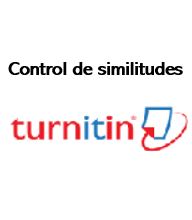Resistencia a la fractura de endocrown en molares utilizando diferentes materiales CAD/CAM: una revisión narrativa de estudios in vitro
DOI:
https://doi.org/10.24265/kiru.2025.v22n2.06Palabras clave:
Resistencia a la Fractura; CAD/CAM; Dientes Endodónticamente TratadosResumen
Tradicionalmente, la rehabilitación de los dientes posteriores tratados endodónticamente con gran pérdida de estructura coronaria era con una corona convencional y un poste con núcleo. Con el avance de la adhesión, aparecieron otras alternativas de restauración, como la endocrown que utiliza la cámara pulpar como un medio retentivo macromecánico, conservando así la mayor cantidad de tejido dentario remanente. Además, existe hoy en día una variedad de materiales con la tecnología CAD/CAM cada vez más al alcance del odontólogo. El objetivo es conocer los resultados de estudios in vitro en molares sobre la resistencia a la fractura de endocrown utilizando diferentes materiales CAD/CAM. En la presente revisión narrativa se recopilaron artículos originales de los motores bibliográficos como PubMed, LILACS, SciELO, Scopus y Google Scholar en el periodo 2018-2023. Se concluye que la endocrown de cerámica disilicato de litio obtuvo los promedios más altos de resistencia a la fractura respecto a los otros grupos y que los modos de falla reparable lo obtuvieron la cerámica infiltrada con polímero (PICN) y la resina.
Descargas
Referencias
El-Damanhoury H, Haj-Ali R, Platt J. Fracture resistance and microleakage of endocrowns utilizing three CAD-CAM blocks. Oper dent. 2015¸40(2): 201–10. doi: 10.2341/13-143-L
Dietschi D, Duc O, Krejci I, Sadan A. Biomechanical considerations for the restoration of endodontically treated teeth: a systematic review of the literature, Part II (Evaluation of fatigue behavior, interfaces, and in vivo studies). Quintessence Int. 2008,39(2),117–129.
Govare N, Contrepois M. Endocrowns: A systematic review. J Prosthet Dent. 2020,123(3):411-418.e9. doi: 10.1016/j.prosdent.2019.04.009.
Magne P, Carvalho AO, Bruzi G, Anderson RE, Maia HP, Giannini M. Influence of no-ferrule and no-post buildup design on the fatigue resistance of endodontically treated molars restored with resin nanoceramic CAD/CAM crowns. Oper Dent. 2014,39(6):595-602. doi: 10.2341/13-004-L.
Belleflamme MM, Geerts SO, Louwette MM, Grenade CF, Vanheusden AJ, Mainjot AK. No post-no core approach to restore severely damaged posterior teeth: An up to 10-year retrospective study of documented endocrown cases. J Dent. 2017; 63:1-7. doi: 10.1016/j.jdent.2017.04.009.
Biacchi, G. R., & Basting, R. T. Comparison of fracture strength of endocrowns and glass fiber post-retained conventional crowns. Oper Dent. 2012; 37(2): 130–6. doi: 10.2341/11-105-L
Carvalho M, Lazari P, Gresnigt M, Del Bel Cury A, Magne P. Current options concerning the endodontically-treated teeth restoration with the adhesive approach. Braz Oral Res. 2018;32(suppl1):147-158. doi: 10.1590/1807-3107bor-2018.vol32.0074
Carvalho AO, Bruzi G, Anderson RE, Maia HP, Giannini M, Magne P. Influence of Adhesive Core Buildup Designs on the Resistance of Endodontically Treated Molars Restored With Lithium Disilicate CAD/CAM Crowns. Oper Dent. 2016 ;41(1):76-82. doi: 10.2341/14-277-L.
Alshibri S, Elguindy J. Fracture resistance of endodontically treated teeth Restored with lithium disilicate crowns retained with fiber posts compared to lithium disilicate and cerasmart endocrowns: in vitro study. Dentistry. 2017;7(12), doi:10.4172/2161-1122.1000464.
El Ghoul W, Özcan M, Silwadi M, Salameh Z. Fracture resistance and failure modes of endocrowns manufactured with different CAD/CAM materials under axial and lateral loading. J Esthet Restor Dent. 2019;31(4),378–387. doi: 10.1111/jerd.12486
Pissis P. Fabrication of a metal-free ceramic restoration utilizing the monobloc technique. Prac Periodontics Aesthet Dent. 1995;7(5):83–94.
Bindl A, Richter B, Mörmann WH. Survival of Ceramic Computer-aided Design/Manufacturing Crowns Bonded to Preparations with Reduced Macroretention Geometry. Int J Prosthodont. 2005;18(3):219-224.
Al-Dabbagh A. Survival and success of endocrowns: A systematic review and meta-analysis. J Prosthet Dent. 2021;125(3),415.e1–415.e9. doi: 10.1016/j.prosdent.2020.01.011
Saratti CM, Rocca GT, Durual S, Lohbauer U, Ferracane JL, Scherrer SS. Fractography of clinical failures of indirect resin composite endocrown and overlay restorations. Dent Mater. 2021;37(6):e341-e359. doi: 10.1016/j.dental.2021.02.002.
De Kuijper M, Gresnigt M, van den Houten M, Haumahu D, Schepke U, Cune MS. Fracture Strength of Various Types of Large Direct Composite and Indirect Glass Ceramic Restorations. Oper Dent. 2019;44(4):433-442. doi: 10.2341/18-111-L.
Gresnigt M, Özcan M, Van den Houten M, Schipper L, Cune M. Fracture strength, failure type and Weibull characteristics of lithium disilicate and multiphase resin composite endocrowns under axial and lateral forces. Dent Mater. 2016; 32(5), 607–614. doi: 10.1016/j.dental.2016.01.004
Sedrez-Porto JA, Rosa WL, da Silva AF, Münchow EA, Pereira-Cenci T. Endocrown restorations: A systematic review and meta-analysis. J Dent. 2016 Feb;52:8-14. doi: 10.1016/j.jdent.2016.07.005.
De Kuijper MCFM, Cune MS, Tromp Y, Gresnigt MMM. Cyclic loading and load to failure of lithium disilicate endocrowns: Influence of the restoration extension in the pulp chamber and the enamel outline. J Mech Behav Biomed Mater. 2020 May;105:103670. doi: 10.1016/j.jmbbm.2020.103670.
Tribst JPM, Dal Piva AMO, Madruga CFL, Valera MC, Borges ALS, Bresciani E, de Melo RM. Endocrown restorations: Influence of dental remnant and restorative material on stress distribution. Dent Mater. 2018 Oct;34(10):1466-1473. doi: 10.1016/j.dental.2018.06.012.
Papalexopoulos D, Samartzi TK, Sarafianou A. A Thorough Analysis of the Endocrown Restoration: A Literature Review. J Contemp Dent Pract. 2021 Apr 1;22(4):422-426.
Awada A, Nathanson D. Mechanical properties of resin-ceramic CAD/CAM restorative materials. J Prosthet Dent. 2015;114(4):587-93. doi: 10.1016/j.prosdent.2015.04.016.
Zheng Z, He Y, Ruan W, Ling Z, Zheng C, Gai Y, Yan W. Biomechanical behavior of endocrown restorations with different CAD-CAM materials: A 3D finite element and in vitro analysis. J Prosthet Dent. 2021;125(6):890-899. doi: 10.1016/j.prosdent.2020.03.009.
Zhu J, Rong Q, Wang X, Gao X. Influence of remaining tooth structure and restorative material type on stress distribution in endodontically treated maxillary premolars: A finite element analysis. J Prosthet Dent. 2017;117(5):646-655. doi: 10.1016/j.prosdent.2016.08.023.
Zhi L, Bortolotto T, Krejci I. Comparative in vitro wear resistance of CAD/CAM composite resin and ceramic materials. J Prosthet Dent. 2016;115(2):199-202. doi: 10.1016/j.prosdent.2015.07.011.
Beji J, Varadan P, Balaji L, Rajan M, Kalaiselvam R, Saeralaathan, S, Ganesh A. Fracture resistance of resin based and lithium disilicate endocrowns. Which is better? - A systematic review of in-vitro studies. Biomater Investig Dent. 2021;8(1),104–111. doi: 10.1080/26415275.2021.1932510
Facenda JC, Borba M, Corazza PH. A literature review on the new polymer-infiltrated ceramic-network material (PICN). J Esthet Restor Dent. 2018;30(4):281-286. doi: 10.1111/jerd.12370.
Veselinova M, Diamantopoulou S, Paximada C, Papazoglou E. In-Vitro Comparison of Fracture Strength of Endocrowns and Overlays in Endodontically Treated Teeth Manufactured with Monolithic Lithium Disilicate and Zirconia. J Funct Biomater. 2023;14(8):422-436. doi: 10.3390/jfb14080422.
Haralur SB, Alamrey AA, Alshehri SA, Alzahrani DS, Alfarsi M. Effect of different preparation designs and all ceramic materials on fracture strength of molar endocrowns. J Appl Biomater Funct Mater. 2020 Jan-Dec;18:1-8 doi: 10.1177/2280800020947329.
Sağlam G, Cengiz S, Karacaer Ö. Marginal adaptation and fracture strength of endocrowns manufactured with different restorative materials: SEM and mechanical evaluation. Microsc Res Tech. 2021 Feb;84(2):284-290. doi: 10.1002/jemt.23586.
Dartora NR, Maurício Moris IC, Poole SF, Bacchi A, Sousa-Neto MD, Silva-Sousa YT, Gomes EA. Mechanical behavior of endocrowns fabricated with different CAD-CAM ceramic systems. J Prosthet Dent. 2021 Jan;125(1):117-125. doi: 10.1016/j.prosdent.2019.11.008.
Sahebi M, Ghodsi S, Berahman P, Amini A, Zeighami S. Comparison of retention and fracture load of endocrowns made from zirconia and zirconium lithium silicate after aging: an in vitro study. BMC Oral Health. 2022 Feb 16;22(1):41. doi: 10.1186/s12903-022-02072-x.
Acar D, Kalyoncuoğlu, E. The fracture strength of endocrowns manufactured from different hybrid blocks under axial and lateral forces. Clin Oral Invest. 2021;25(4),1889–1897. doi: 10.1007/s00784-020-03495-y
Taha D, Spintzyk S, Schille C, Sabet A, Wahsh M, Salah T, Geis-Gerstorfer J. Fracture resistance and failure modes of polymer infiltrated ceramic endocrown restorations with variations in margin design and occlusal thickness. J Prosthodont Res. 2018 Jul;62(3):293-297. doi: 10.1016/j.jpor.2017.11.003.
Aktas G, Yerlikaya H, Akca K. Mechanical Failure of Endocrowns Manufactured with Different Ceramic Materials: An In Vitro Biomechanical Study. J Prosthodont. 2018 Apr;27(4):340-346. doi: 10.1111/jopr.12499.
Publicado
Número
Sección
Licencia
Derechos de autor 2025 Luis Mariano Maita-Castañeda , Luis Maita-Véliz, Donald Ramos-Perfecto, Sonia Luque-Peralta

Esta obra está bajo una licencia internacional Creative Commons Atribución 4.0.
- Los autores/as conservarán sus derechos de autor y garantizarán a la revista el derecho de primera publicación de su obra, el cuál estará simultáneamente sujeto a la Licencia de reconocimiento de Creative Commons que permite a terceros compartir la obra siempre que se indique su autor y su primera publicación esta revista.
- Los autores/as podrán adoptar otros acuerdos de licencia no exclusiva de distribución de la versión de la obra publicada (p. ej.: depositarla en un archivo telemático institucional o publicarla en un volumen monográfico) siempre que se indique la publicación inicial en esta revista.
- Se permite y recomienda a los autores/as difundir su obra a través de Internet (p. ej.: en archivos telemáticos institucionales o en su página web) posterior al proceso de aprobación del manuscrito, lo cual puede producir intercambios interesantes y aumentar las citas de la obra publicada.














